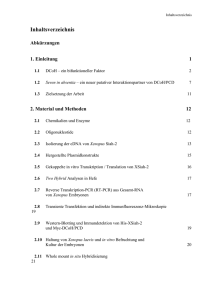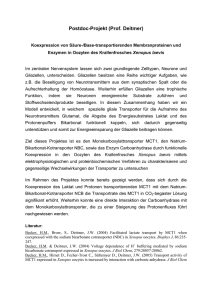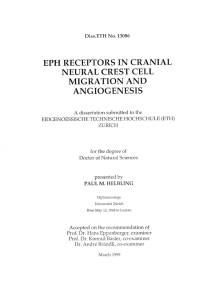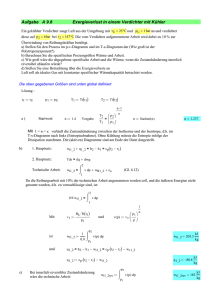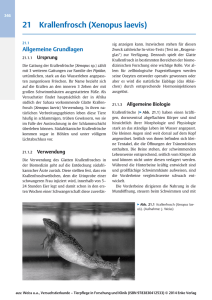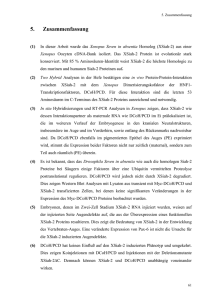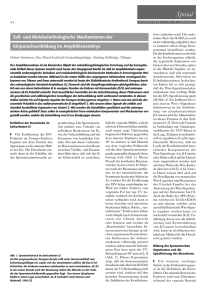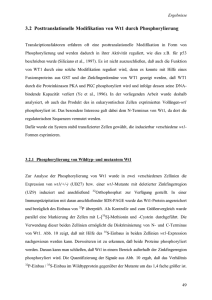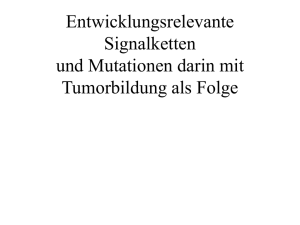Genes and mechanisms regulating - ETH E-Collection
Werbung
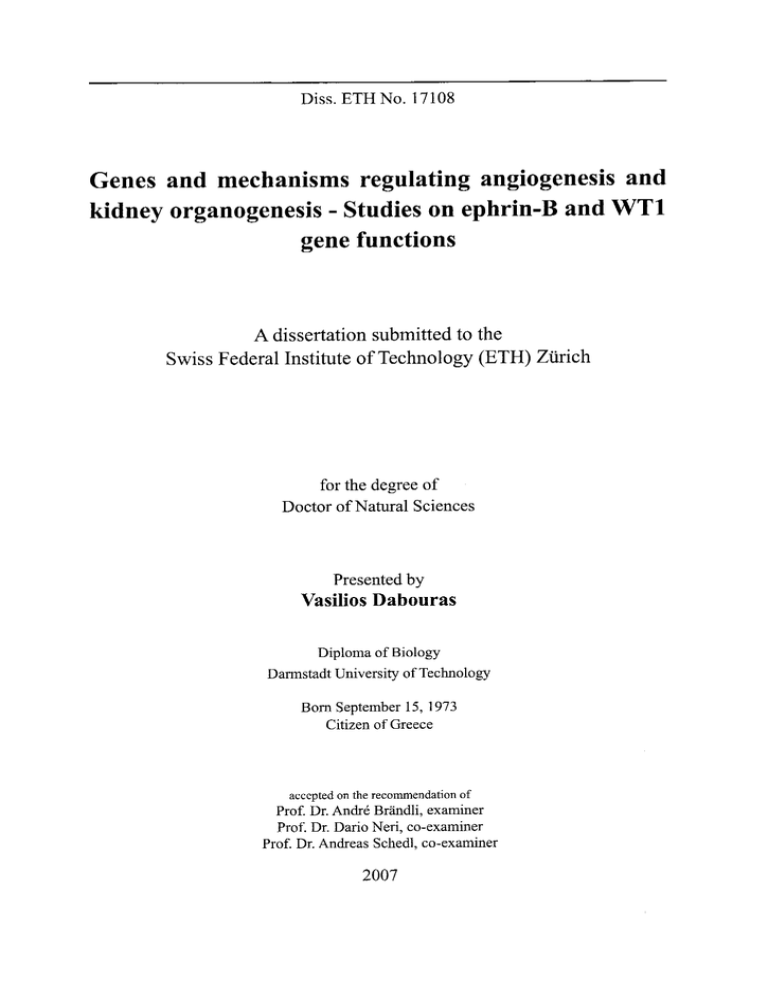
Diss. ETHNo. 17108 Genes and mechanisms regulating angiogenesis and kidney organogenesis Studies on ephrin-B and WT1 gene functions - A dissertation submittedto the Swiss Federal Institute of Technology (ETH) Zürich for the degree of Doctor of Natural Sciences Presented by Vasilios Dabouras Diploma of Biology Darmstadt University of Technology Born September 15, 1973 Citizen of Greece acccpted on the recommendationof Prof. Dr. Andre Brändli, examiner Prof. Dr. Dario Neri, co-examiner Prof. Dr. Andreas Schedl, co-examiner 2007 Summary Summary is a convenientmodel System for studying molecularand cellular aspects of renal and vascular development.Two days after fertilisation it's excretory and circulatorySystems statt to function. The molecules and cellular processes Controllingdevelopment of these organs are similar to the ones utilised in higher vertebrates. The aim of this thesis was to investigate Xenopus laevis the function of the zinc finger transcription factor WT1 during pronephric development, as well as analysing the role ofthe Eph-ephrinsignalling pathwayduring angiogenesis in the frog Xenopus laevis. In a first study, Xenopus laevis cDNAs were identified encoding orthologues of mammalian markers of the glomerulus, including the angiotensin 11 receptor type I, nephrin and two members of the nephrin like gene family. The deduced protein structure of these genes is largely conserved to its mammalian counterparts.Expression for all of them was found in the Xenopus glomus. I could show that the Xenopus glomus is structural similar to the mammalian glomerulus, consisting of fenestrated endothelial cells, a glomemlar basement membrane (GBM), and visceral epithelial cells (podocytes), which form podocyte foot processes and a slit diphragm. These findings establishednovelmarkers of glomemlardevelopment and will be valuable to study the genetic basis of glomemlardevelopment in vertebrates. I studied the function of WT1 during pronephric development. I performed loss-of function and gain of function studies. Knockdownof WT1 by means of morpholino antisense oligonucleotides injeetions in Xenopus embryos resulted in reduced expression of glomemlar marker genes, abseilt glomerulusand formationof edema at larval stages. Tubulär development was largely unaffected. Interestingly, knockdown of WT1 lead to an increase expression of WT1, indicating a complex mode of action of WT1 during glomemlar development. These results suggest, that WT1 function is dispensable for nephrogenesis, but essential of glomemlar Next, development. In my second projeet, I studied the role of ephrin-B genes during vascular development. Ephrin-B2 is the ligand for the receptor tyrosine kinase EphB4, whichcontrols angiogenicgrowth of intersomiticvcssels in the Xenopus embryo. Ephrin-B2 is expressed, together with ephrin-B1 in the somites adjacent to the growth path taken by extendingintersomiticvessels, implying that both genes are involvedin intersomiticvessels outgrowth. 1 performed loss-of-funetion studies in Xenopus, which indicate that both ephrin Bl and B2 are necessary to regulate outgrowth of intersomitic vessels, presumably via EphB4. To understand the mechanism, by which ephrin-B proteins guide endothelial cells, 1 utilised stripe assays to characterisethe interactionof ephrinB proteins with primary human endothelial cells in vitro. Human umbilical vein and arterial endothelial cells were exposed to ephrin-B coated surfaces and their response was monitored. 5 Summary and arterial endothelialcells avoid ephrin-B coated surfaces in a dose-dependent manner, which indicatesthat ephrin-B ligands mediate repulsive signaling to endothelial cells. The results show that venous Zusammenfassung Zusammenfassung Der afrikanische Krallenfrosch Xenopus laevis dient als Referenzmodell um zelluläre und molekulare Aspekte der Nieren- und Blutgefässentwicklungzu studieren. Zwei Tage nach der Befruchtung sind das Nieren-und das Kreislaufsytemvoll funktionsfähig. Die Moleküle, welche die Entwicklung dieser Organe steuern, ähneln sich in niedern und höheren Vertebraten. Ziel dieser Arbeit war sowohl die Analyse der Funktion des Zinkfmger-Transkriptionfaktors Wilms-Tumor Gen 1 (WT1) währendder Vornierenentwicklungin Xenopus, als auch die Rolle des Eph-cphrin-Signalwegeswährendder Blutgefässsprossung (Angiogenese). Im ersten Projekt dieser Dissertation wurden Xenopus cDNA identifiziert,die für orthologe glomeruläreMarkergenehöhererWirbeltiere kodieren. DieseschliessenAngiotensinIT Rezeptor Typ I, Nephrin, Nephl und Neph4 ein. Die abgeleiteten Proteinsequenzensind weitesgehend konserviert zu den entsprechenden Säugetierproteinen. Expression im Xenopus Kapillametz (Glomerulus) konnte für alle diese Gene nachgewiesen werden. Ich konnte zeigen, dass der Xenopus Glomerulus aus einem gefensterten Kapillarendothel, einer Basalmembran und Podozyten besteht. Die Podozyten bilden Podozytenfortsätze und Filtrationsschlitze. Somit ist der Filtrationsapparatin Xenopus ähnlich dem der Säugetiere aufgebaut. Unsere Ergebnisse etablieren neue Markergene für die Entwicklung und Funktion des Glomerulus die nun als nützliche Werkzeuge für weitere Untersuchungen zur molekularen Regulationder glomerulären Entwicklung in Wirbeltieren dienen. Mittels der glomerulären Markergene untersuchte ich die Funktion des Wilms Tumorgens WT1 während der Vornierenentwicklungbei Xenopus. Hierzu führte ich Funktionsverlustund Überexpressions-studien durch. Hemmung der WT1-Genfunktion mittels MorpholinoOligonukleotide führte zu reduzierten Expression von glomerulären Markergenen, fehlendem Glomerulus und Bildung von Oedemen im Larvenstadium. Die Entwicklung der Nierenkanälchen (Tubuli) war weitesgehend normal. Interessanterweise führte die Inhibition von WT1 zu einer Erhöhung der WT1-Expression. Dies deutet auf eine komplexeRegulation der Funktionsweise von WT1 während der glomerulärenEntwicklung hin. Unsere Ergebnisse lassen darauf schliessen,dass WTlwesentlichfür die Entwicklung des Glomerulus, aber nicht der Nierenkanälchenist. Projekt diente der Analyse der Funktion von ephrinB Genen während der Blutgefässentwicklung. EphrinB2 ist der Ligand für den EphB4-Rezeptor, welcher das Wachstum intersomitischerGefässe in Xenopus reguliert. Ephrin-B2 ist zusammenmit ephrinBl in den Somiten exprimiert, angrenzend am Wachstumspfad intersomitischer Gefässe. Dies lässt vermuten, dass ephrin-B1 und ephrin-B2 das Auswachsen intersomitischerGefässe Mein zweites Zusammenfassung regulieren. Hemmung der ephrin-B1 und ephrin-B2 Genfunktion in Xenopus Embryos zeigt, dass ephrin-B1 und ephrin-B2 notwendig zur Regulation des Auswachsens intersomitischer Gefässe sind, vermutlich mittels EphB4. Um den Mechansimus zu verstehen, mit dem ephrin-B Proteine Endothelzellen zu ihrem Ziel leiten, untersuchte ich mit Hilfe eines Streifen-Assays wie primäre humaneEndothelzellen in vitro auf ephrinB Proteine reagieren. Humane arterielle und venöse Nabelschnur-Endothelzellenwurden auf ephrin-B beschichtete Oberflächen kultiviert anschliessend ihr Verhalten zu beobachten. Die Ergebnissezeigen, dass sowohl arterielle als auch venöse Endothelzellen konzentrationsabhängigephrin-B beschichtete Oberflächen vermeiden, welches nahe legt, dass ephrin-B Liganden abstossende Signale in Endothelzellen induzieren. um
